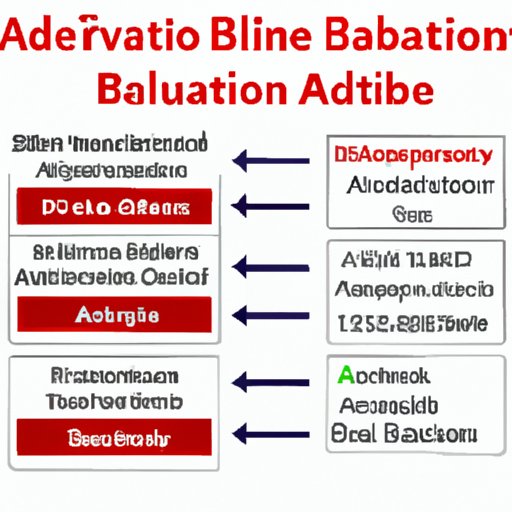
I. Introduction
Platelet donation is a life-saving act that helps patients all over the world. Platelets play a crucial role in the blood clotting process, making them essential for individuals with conditions that cause severe bleeding. According to the American Red Cross, every two seconds, someone in the United States needs a blood transfusion, and platelets constitute a significant portion of those transfusions. In this article, we will explore the frequency with which it is safe to donate platelets, as well as the many benefits that come with this act of kindness.
II. Factors Affecting Platelet Donation Frequency
The frequency with which an individual can donate platelets does not have a universal answer. Several factors might impact the eligible donation interval, including weight, overall health, and age. Typically, donors must be at least 17 years old and weigh at least 110 pounds. Older adults may not be eligible to donate platelets as frequently due to health concerns.
Individuals who are taking blood-thinning medications, such as aspirin, may not be able to donate platelets due to the risks they pose. Different people have different biological constitutions that influence the frequency with which they can donate platelets. Therefore, individuals with a history of low platelet count, iron deficiency anemia, or other bleeding disorders may not be eligible for platelet donation.
III. Benefits of Platelet Donation
Platelet donation does not only benefit recipients but donors as well. People who donate platelets often report feelings of pride and purpose. According to studies conducted by the American Red Cross, people who choose to donate blood and platelets regularly experience lower stress levels and fewer symptoms of depression. Additionally, regular blood and platelet donation has been noted to lower an individual’s risk of cardiovascular and metabolic diseases, including obesity and diabetes.
Transfusions that include platelets have life-changing benefits for patients. For individuals with leukemia and other cancers, platelet donations are necessary to provide the necessary clotting factors needed for chemotherapy treatment. Bone marrow and stem cell transplant patients also frequently need platelet transfusions. Platelets help these patients recover from cancer treatments, making platelet donation an essential component of their recovery.
IV. Platelet Donation Frequency Guidelines
The American Association of Blood Banks (AABB) provides guidelines on how frequently donors may donate blood and platelets. According to the AABB, individuals can donate platelets every seven days, but they should not exceed 24 times in a calendar year. These guidelines have evolved from previous versions, which recommended an eight-week interval between platelet donations. AABB research shows that platelet counts go back to normal by the seventh day, allowing platelet donors to donate regularly.
The latest guidelines are critical to ensuring patient safety. Although not all individuals can donate platelets as frequently as others, these guidelines help ensure that those who can donate do so safely. The guidelines also help blood banks and clinics manage their platelet supply and ensure they will have enough to assist when necessary.
V. Alternatives to Platelet Donation
Suppose individuals face disqualifications or cannot donate platelets as frequently due to biological factors such as age, weight, or health issues. In that case, there are alternatives to still support the cause. Encouraging friends and family to donate in their place is an excellent option. Additionally, participating in events that raise awareness and funds for blood and platelet donations, such as blood drives or online campaigns, is also a valuable alternative.
VI. Myth-Busting Platelet Donation Frequency
Many misconceptions surround the process and frequency of platelet donation. One of those myths is that platelet donation is a painful process. While needles are involved, donors typically report only mild discomfort. At the same time, the procedure takes between 90 and 120 minutes, making this an efficient way to give back to the community. Another myth is that individuals can donate platelets if they have traveled internationally. However, individuals who have traveled internationally in the last month may experience a temporary deferral, making them ineligible to donate.
Information about platelet donation frequency accuracy is critical because it will help donors understand the implications of their actions. It is essential that donors have access to reliable sources on which they can base their decision to donate.
VII. Interview with a Platelet Donor
We spoke with Angela, a 28-year-old platelet donor from Ohio, about her experiences with platelet donation. Angela has donated platelets five times and shared insights into the frequency, process, and her experience in donating.
Q. How often can you donate platelets, and how has the process been for you?
A. I donate every two weeks, which means I can donate around 26 or 27 times a year to hit the 24 times limit. The process is pretty easy and comfortable. I usually watch movies, read a book, or get some work done on my laptop while donating.
Q. How has this experience impacted your life?
A. Platelet donation plays a vital role in patients’ recovery, and I always feel proud to be part of that process. It may not seem like a significant contribution to some, but for me, it is a way to give back to the community and support those who are fighting for their lives.
VIII. Conclusion
Donating platelets is a valuable form of support for individuals in need of life-saving transfusions. Factors affecting the frequency in which individuals can donate platelets vary, but reputable guidelines encourage safe and sustainable platelet donation. Platelet donations not only benefit recipients but also have several health benefits for donors. Alternatives to platelet donation can support those unable to donate. Overcoming common misconceptions and ensuring access to accurate information is essential to support the continuation of platelet donations. Giving back to the community enhances the donor’s sense of purpose and serves as a way to support those in need.
Call to action: If you are eligible, consider platelet donation as a way to give back to your community while helping patients in need.




